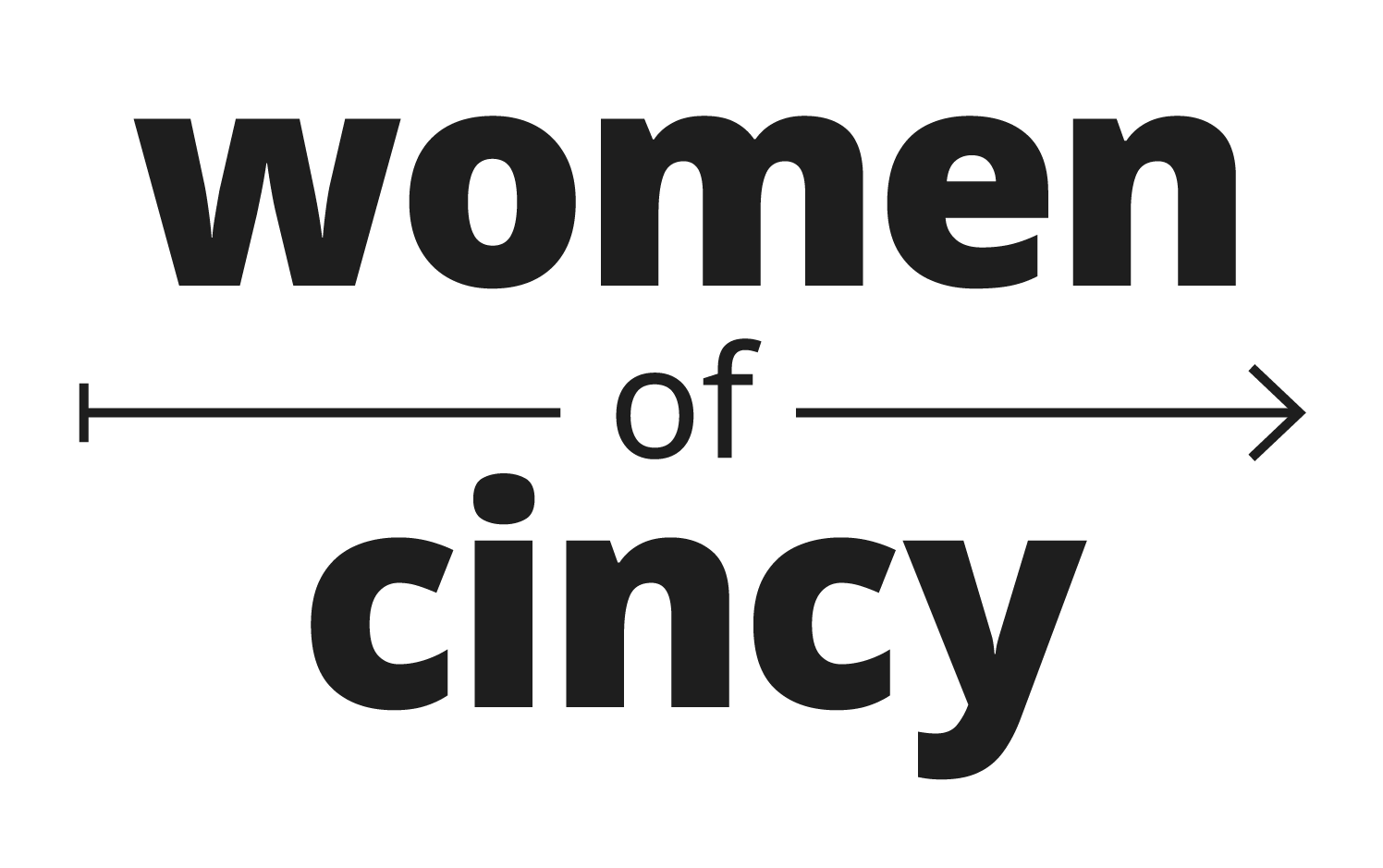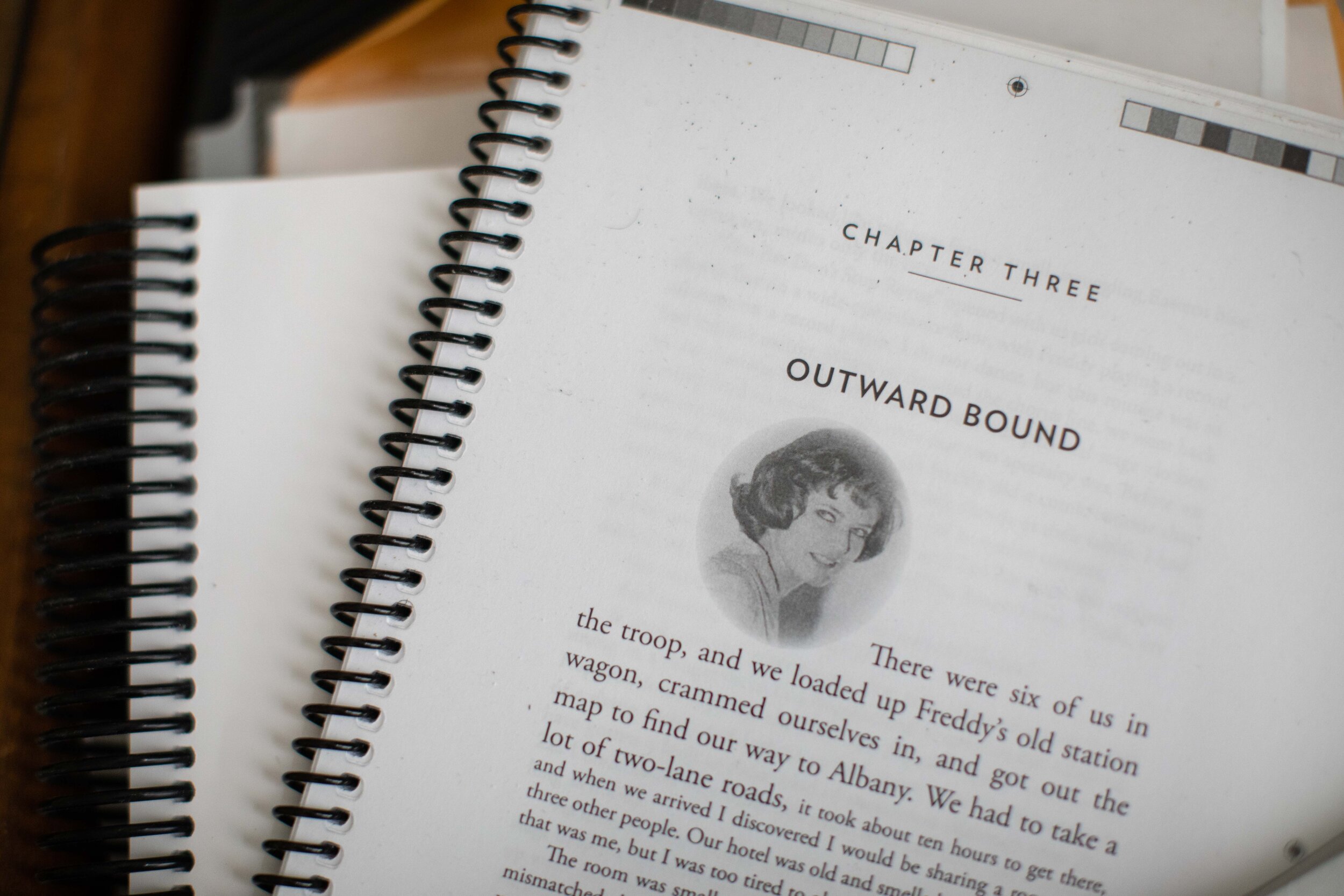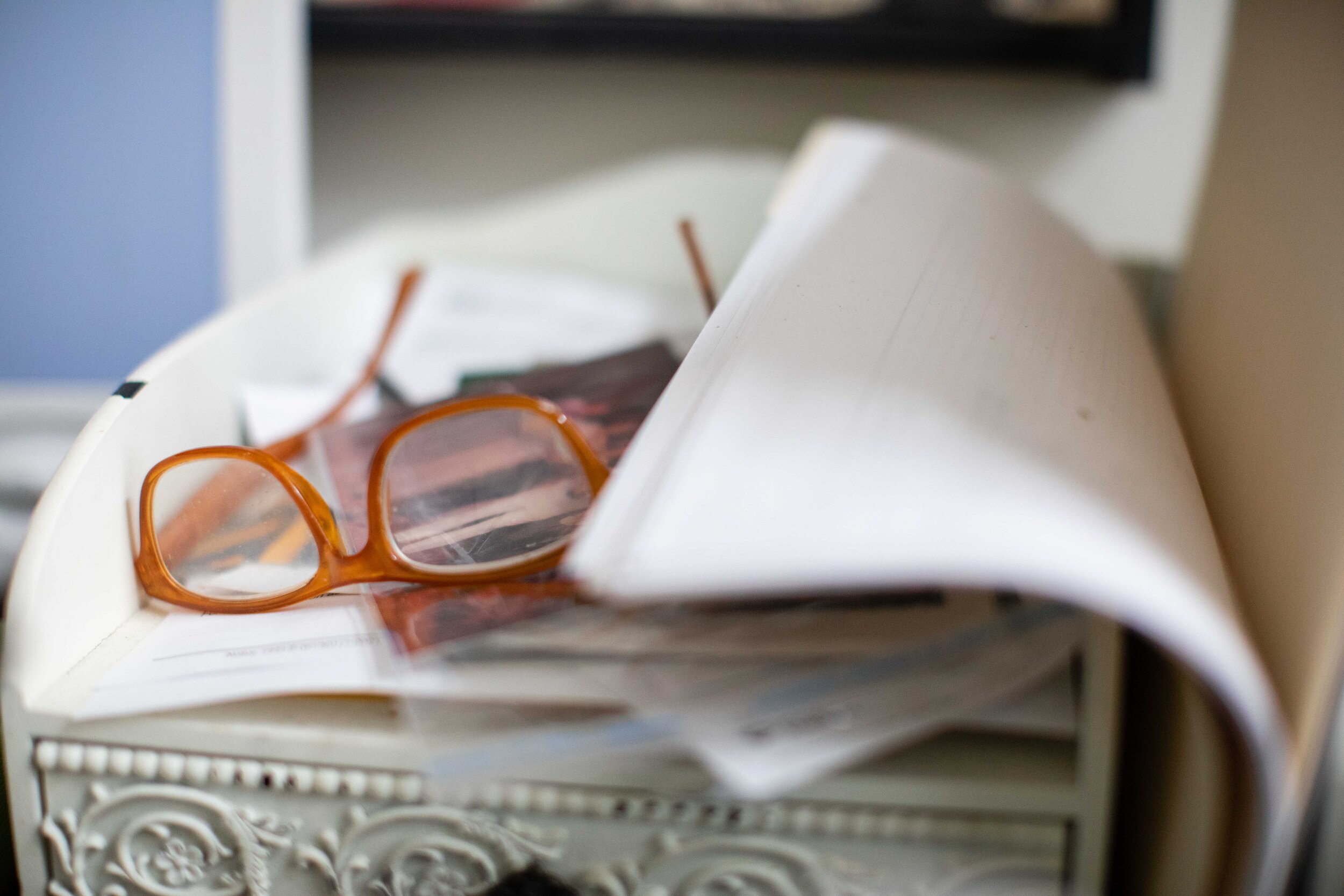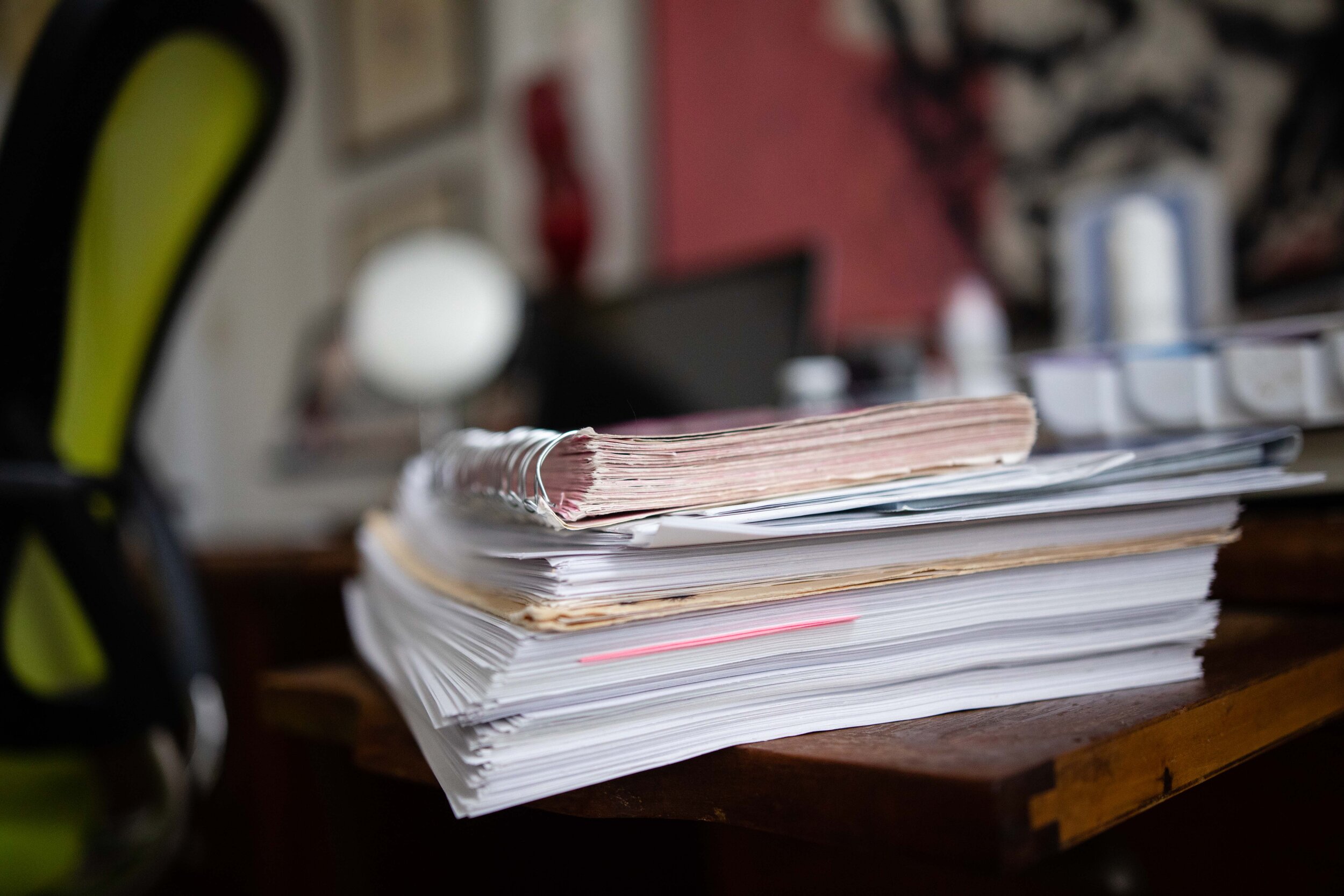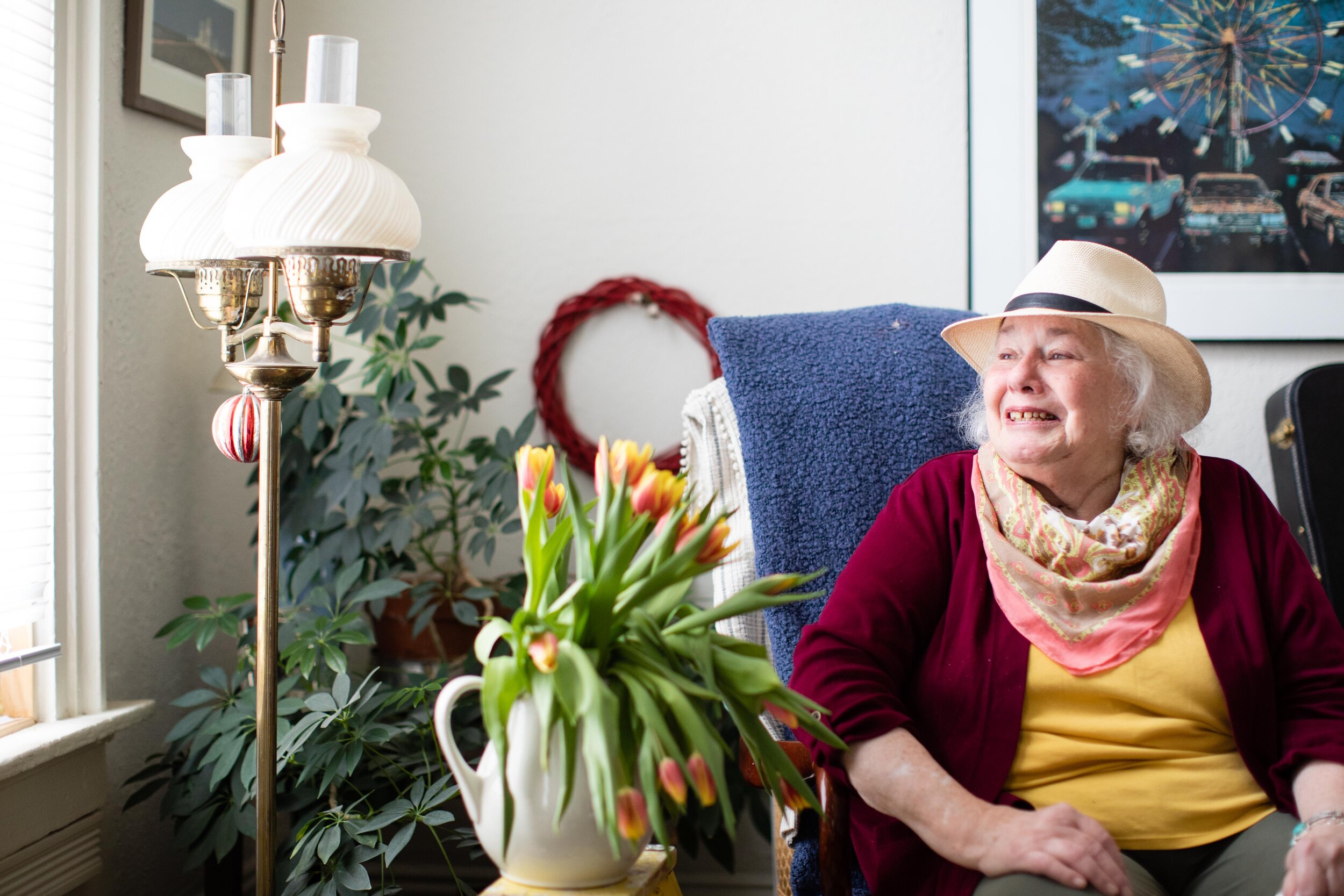Katie Laur: Bluegrass Musician, Storyteller, and Pioneering Woman
Katie’s voice is deep and warm. There’s a steadiness in the way she talks, rhythmic and thoughtful. Many Cincinnatians would recognize her voice after nearly 30 years on W.N.K.U. as host of “Music from the Hills of Home,” and leader of her own bluegrass band, the Katie Laur Band. Her voice is the sound of home for many.
Sitting with Katie, her eyes dance when she speaks about her experiences and all of the colorful people she’s met – from Main Street, Cincinnati, to The Carter Family Fold. She’s in the process of publishing an anthology of hundreds of her own stories written over decades – tales of the people and places she’s encountered. She is a pioneering woman keen on observation, with eyes wide open.
When asked about Cincinnati, she has to say: “Well, I think Cincinnati was the very place that I should’ve been.” And for that, we are grateful – because it’s here that she has pioneered and nurtured the bluegrass music culture since the 1960s.
Interview by Hanna VanKuiken. Photography by Alex Larrison.
What does music mean to you?
Music was the thing that bound my family together. We had all kinds of sheet music, and the memories of it make me smile because it was such a happy part of my growing up. Everybody gathered around and it was warm. It was so much – it meant love. And I guess from the time I was little, I wanted to be a singer. I didn’t have any concept of what that was, but it just never occurred to me that I’d be very far from music, and I wasn’t – I haven’t been.
Tell me about growing up – with music and your family.
Well, I was born in Paris, Tennessee, and everybody was at war in World War II. My family would gather around the radio; it was like the beating heart of the house. We lived with my grandparents and there was nothing else to do but listen to the radio or play music – and we didn’t really play much music until the men got home from the war, but then, it was a big time. We had a guitar, a mandolin, a fiddle, a piano, and plenty of singers. My family were expert singers. We sang for every graduation or wedding or whatever was going on in the community. Somebody called, and whoever was available went and sang. So, I grew up with that. I started singing by myself, and then my sister was 3 years old when she started singing. We didn’t even know she could talk!
Later we joined the Appalachian migration after WWII. We moved to Detroit in 1950 so the men could get good jobs. When we moved, we didn’t have chickens attached to the roof of the car, but nearly.
Everybody called us hillbillies and made fun of us because we talked “southern.” We started school there – I was the first one of the kids to go – and that was some misery. But, I remember my first teacher... She always had a big, colored picture of an apple and it looked so neat. So that’s probably why I still have pictures on the walls, because I loved that apple.
Did your family continue to sing once you moved to Detroit?
My family continued to sing every weekend. We’d gather at somebody’s house and jam. And eventually, my sister and my three cousins and I formed a singing group. We were called The Haley Sisters and we did all kinds of music. We started singing at contests and churches and anywhere they’d want us. We were pretty good, and we all had dresses just alike, with big petticoats that our mothers made for us. We did that for a long time.
Music was the thing that bound my family together. We had all kinds of sheet music, and the memories of it make me smile because it was such a happy part of my growing up.
Then we joined the choir when we started going to church. We joined because we were tall, and the choir robes would fit. If you were short, the choir robe would’ve drug on the floor, and you couldn’t have that. I remember getting to church, skidding in there right on time. And you would go to your locker and put your jacket up and have a mirror on the locker door so you could check your lipstick and get your robe on and march down the aisle.
What kind of music did the Haley Sisters sing?
Our minister always wanted us to do things like the “Hallelujah Chorus,” but that was beyond us... [Sings] Hallelujah. We tried; we worked on it. We worked on other pieces from Bach, too – some tough ones.
One we always got to do at Thanksgiving was:
[Sings]
The valleys stand so thick with corn that they laugh and sing
They laugh – they laugh
And sing – and sing
They laugh and sing!
Somehow everything we did seemed to be related to music.
You sang a lot of different kinds of music. When did you find bluegrass?
I moved to Cincinnati in 1966 and this is where I met bluegrass musicians. I went to a little place called Aunt Maudie’s down on Main Street – 1207 Main. And I heard Jim McCall, Vernon McIntyre, and the Appalachian Grass playing “Salty Dog Blues” with the banjo and the guitar, and I was just transfixed. I went in there and sat down and I didn’t leave for months. I attached myself to that band. So, it was coming to Cincinnati that did it. Cincinnati was a real center for traditional music.
When did you go from watching to singing?
It took about two weeks, but I started singing harmony with the band. And that was in the days when Main Street looked like a lost horizon – there just wasn’t anybody down there. But I had crowds coming around the corner.
Pretty soon a guy came in from Clifton, from King’s Row. And he said, “I’ll pay you each $80 a week for five nights of music – but you have to bring the girl with you.” Because they wouldn’t have brought me. Believe me, they wouldn’t have if they could’ve gotten away with it.
And later, you started your own band, right?
I had different ideas. I wanted softer music – not so much hardcore stuff. And I believed there was an audience for it. In 1975, I broke away and started my own band, the Katie Laur Band.
I still run into people who recognize my voice. Unlikely people. People who you wouldn’t think would be listening to bluegrass on the radio – but they did, and I was glad to put it there.
We used to go out to Garrison Keillor’s Prairie Home Companion. We just sang everywhere – on the East Coast, New York City. We used to go down to the Carter Family Fold in Virginia and Maybelle Carter would always come when we appeared, and Sara Carter and June Carter – her family. The people down there were so wonderful. They danced all of the time. They had tap shoes and they danced to all of the fiddle tunes. We did very well.
You are one of, if not the, first female leaders of a bluegrass band. Tell me what that was like.
It was kind of a thing, but something I have long ago forgotten about. I’m glad that I’m what they call a pioneering woman. I’m glad that I get credit for that, but who was the first doesn’t really matter.
It was very difficult to be a woman amongst those men because they were serious mountain folk. They would never have a dressing room for a woman at the festivals – you’d go to a dressing room and it would say “For Men Only” – and so I had to change clothes in a port-a-john with somebody watching the door. It would be hot and smelly in there. But those were the things you had to deal with.
I started writing my stories then. Going to festivals, I saw a lot of stuff I wanted to describe. And so, I started writing stories. I sold some of them. Actually, I sold all of them, but I didn’t really try to get far ahead with writing – I just kept doing it.
And did you continue to play in Cincinnati – in Over-the-Rhine and Clifton?
Yes, we played there through the week usually.
What was Main Street like during that time?
There was a whole lot of Cincinnati characters around in those years. Mr. Spoons was one; he would dance with us. And he was the best spoons player that I ever saw. He kept about 16 spoons in his back pocket at all times and he would come up and play the spoons on your shoulder or on your head and tap dance at the same time.
And then there was Caledonia. She was more around during the jazz years. She grew up in Louisville, on the street corner, tap dancing for change. But she could go up to a table and isolate her buttocks and just shake one buttock in a customer’s face and get tips for that.
There was another mountain granny who would come in and dance – like a jitterbug kind of dance – and then she would just flop over on her hands. And her pantaloons would show where her dress fell down and she would just go on out the door like that – just springing on her hands. There were some characters.
Why do you think that Cincinnati is such a haven for bluegrass music?
There were musicians here. People from Appalachia came here with their families to earn money; they worked in the factories in the day and played music at night. And there were radio stations here – like W.L.W. and W.C.K.Y. They were powerful radio stations that went all over the United States.
You were the host of W.N.K.U.’s longest running program, “Music from the Hills of Home.” Can you tell me about that?
Somebody came to see me at Arnold’s Bar and Grill and said, “Would you like a job being a disc jockey on W.N.K.U.?” And I said I would. I started doing it in 1989; I did it for 27 years and it was a blast.
What did you like most about it?
I liked being off-the-cuff and unscripted and letting what happened, happen. I had good engineers who knew how to be spontaneous. It was lively and I met some wonderful characters. And lots of bands would come into the studio and interview, so I met a lot of musicians that way.
I’m glad that I’m what they call a pioneering woman. I’m glad that I get credit for that, but who was the first doesn’t really matter.
My mother could get the show on the computer in Huntsville, Alabama, and that was a treat. We taught her how to work it so she could answer or send in; she’d usually just send in “Hi, how are you? This is your mom.” And that’s all she would say. But it was really neat to know she was listening.
I still run into people who recognize my voice. Unlikely people. People who you wouldn’t think would be listening to bluegrass on the radio – but they did, and I was glad to put it there.
You mentioned writing stories about the things you experienced at music festivals. Can you tell me more about your writing?
My dad was a good writer, and he got me my first typewriter so that I could write myself. It was always kind of a mysterious side of me that I never really told many people about it. And when I grew up and started writing a lot, I never told anybody about it. It seemed like a separate piece of me.
I was a good writer. And I eventually started doing a column for the newspaper that came out before CityBeat, and then when CityBeat opened, I moved to them. Then I started working for Cincinnati Magazine, doing a column. “Letter from Katie” was what they named it.
When I sent my computer to San Francisco last year to get it fixed by a friend of mine, he found 600 and some odd stories on it that I had written and misfiled. [Points to a stack of papers as high as a hand: the stories.]
Wow – that’s a lot of stories. Will you publish them?
Yes. It’ll be an anthology of the 600 stories and pieces that I wrote. Some of them are thought pieces. Some of them are stories about singing and how it felt. Some of them are about people that I ran across; if they were colorful, that would help. It makes it easy when you have great characters.
I can’t wait to read them. Okay, last question: I want to know about an influential woman in your life.
Irma Lazarus. She was married to Fred Lazarus, who owned Shillito’s. Irma was a hard charger and worked hard in the arts and was on a lot of committees and was just... an old-fashioned word, a doyen of the arts, and I suppose she influenced me as much as any woman. She introduced me to the symphony and organizations, and she just took me under her wing and nourished me. She was a big influence.
I used to go over to their house and swim every day. She lived off of Torrence Parkway and had a great long driveway and a whole bed of watercress – when she’d make soup or sandwiches, she’d just go down and pick fresh watercress. She was just neat. She should’ve had some more recognition than she had, but she didn’t care. I sang at her funeral; I sang “Coat of Many Colors.’ It was one of her favorite songs. And that takes me down memory lane.
Do you know an awesome woman of Cincy? Nominate her here! New features launch on Mondays.
Women of Cincy is a certified 501(c)3. This belongs to you. Consider supporting future stories with a donation.
